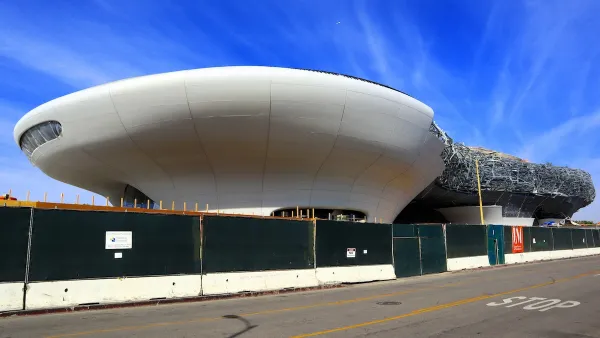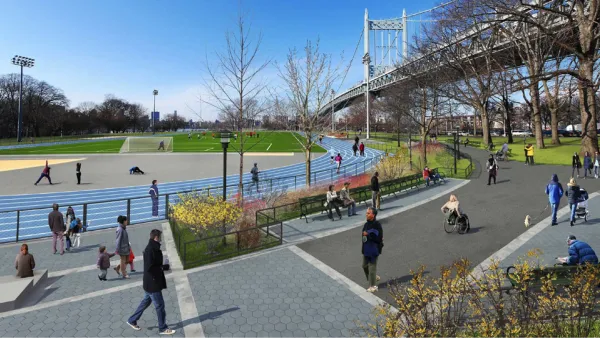Raleigh's North Carolina Museum of Art is redesigning its extensive grounds with an eye toward how public interaction with museums is shifting. Inclusion, sustainability, and brand development are paramount.

The outdoor areas next to museums and cultural institutions often feel like afterthoughts, as if to remind passers-by that the real treasures are inside. In Raleigh, the North Carolina Museum of Art wants to change that with a 17-acre, $13 million park project that will be a focal point for visitors.
The space will function as a park rather than an outdoor gallery. "'We are dead set against overpopulating this area with works of art,' said Lawrence J. Wheeler, the museum's director. 'We are not trying to create a sculpture garden but a unifying idea of what people perceive as a museum and what they perceive as a park.'"
J. Peder Zane discusses a shift in how the public interacts with museums, away from exclusive "fine arts" and toward a more multifaceted experience. "For many museums, this means viewing everything they do — the buildings they commission, the meals they serve, the gifts they sell — as integral to their mission. Instead of treating amenities as necessary evils, the institutions see them as opportunities to develop a museum brand."
FULL STORY: A Park as an Extension of the Museum Itself

National Parks Layoffs Will Cause Communities to Lose Billions
Thousands of essential park workers were laid off this week, just before the busy spring break season.

Retro-silient?: America’s First “Eco-burb,” The Woodlands Turns 50
A master-planned community north of Houston offers lessons on green infrastructure and resilient design, but falls short of its founder’s lofty affordability and walkability goals.

Delivering for America Plan Will Downgrade Mail Service in at Least 49.5 Percent of Zip Codes
Republican and Democrat lawmakers criticize the plan for its disproportionate negative impact on rural communities.

Test News Post 1
This is a summary

Test News Headline 46
Test for the image on the front page.

Balancing Bombs and Butterflies: How the National Guard Protects a Rare Species
The National Guard at Fort Indiantown Gap uses GIS technology and land management strategies to balance military training with conservation efforts, ensuring the survival of the rare eastern regal fritillary butterfly.
Urban Design for Planners 1: Software Tools
This six-course series explores essential urban design concepts using open source software and equips planners with the tools they need to participate fully in the urban design process.
Planning for Universal Design
Learn the tools for implementing Universal Design in planning regulations.
EMC Planning Group, Inc.
Planetizen
Planetizen
Mpact (formerly Rail~Volution)
Great Falls Development Authority, Inc.
HUDs Office of Policy Development and Research
NYU Wagner Graduate School of Public Service





























